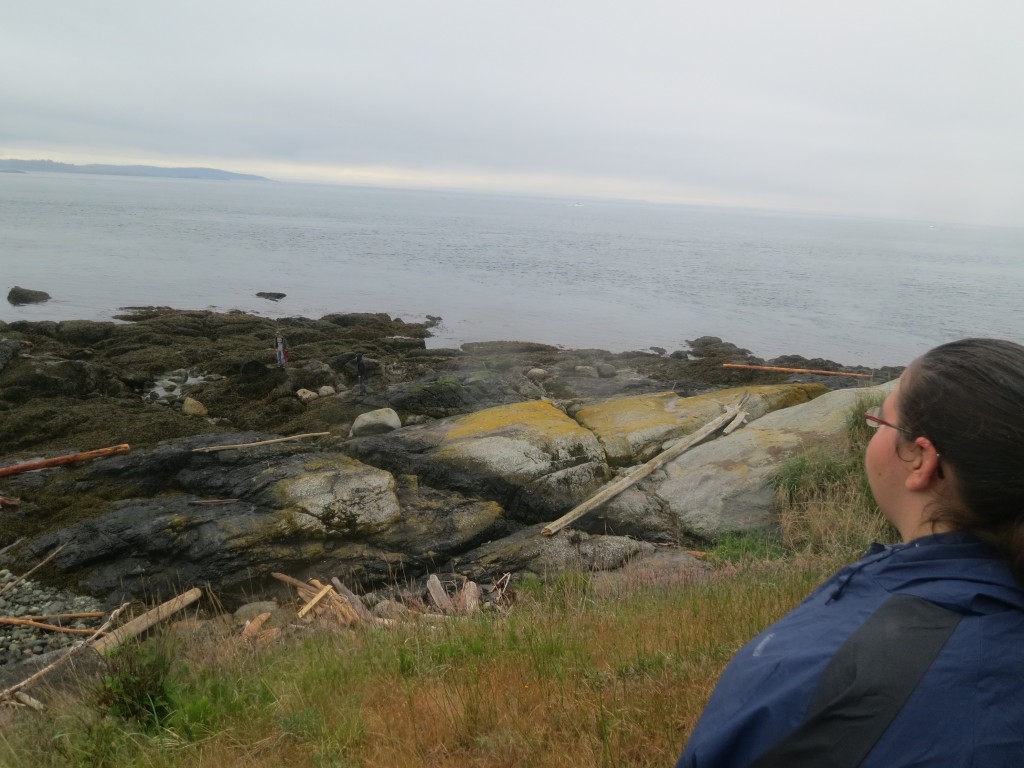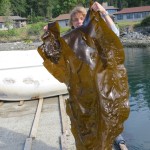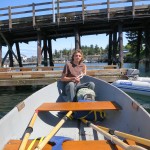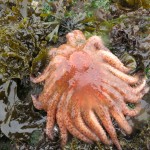We’ll be blogging about all the research and the cool organisms we’re working with in the coming weeks, so stay tuned for that, but first I (Molly, a.k.a. Dr. Jacobs) wanted to give you some background: Friday Harbor Labs (FHL) is a field station run by the University of Washington, and it is located in the San Juan Islands, which are a couple hour drive and a 1.5 hr ferry ride northwest of Seattle. The Canadian border runs along Haro Strait, which separates San Juan Island (our home) from Vancouver Island. The water is cold, the weather is cool, and the shores are rocky and steep! Here’s a photo of the FHL dock – this is the view from right outside our lab space.
 FHL is a special place for me. I first came here as an undergraduate doing a summer research project, and this is where I really got hooked on marine science. I came back as a graduate student, and lived and worked here for almost seven years while doing my dissertation research. I think of this as paradise on earth, and not just because of the scenery – what really makes this place special is the scientific community.
FHL is a special place for me. I first came here as an undergraduate doing a summer research project, and this is where I really got hooked on marine science. I came back as a graduate student, and lived and worked here for almost seven years while doing my dissertation research. I think of this as paradise on earth, and not just because of the scenery – what really makes this place special is the scientific community.
In the summer, researchers come from all over the world to work here, and even though some of the people are very famous, the atmosphere is egalitarian: everyone from the lab director to the most junior undergraduate goes by his or her first name, and is treated as a scientific peer. The level of science is high, and people work hard into the night, but it feels like we’re all at summer camp together.
I’m thrilled to be here with three McDaniel students! We’ve been working hard, but on Saturday we took a break to go tidepooling in one of my favorite places on the island, Cattle Point (on the southern tip). In this picture, rising junior Joe Odierno is standing in the low intertidal – behind him is the strait of Juan de Fuca, and behind that are the Olympic mountains!

Here’s another view of Cattle Point, this one looking a little more to the east. The land mass in the background is another of the San Juan Islands (Lopez). Rising senior Deanna Campbell is in the foreground; if you squint, you can see Joe and another student down on the shore:
 Finally, here’s one of my favorite critters: the starfish Pycnopodia helianthoides. These voracious predators can be more than 3 feet in diameter (!), making them the largest known starfish. The really big ones are subtidal, though – this low intertidal specimen was much smaller.
Finally, here’s one of my favorite critters: the starfish Pycnopodia helianthoides. These voracious predators can be more than 3 feet in diameter (!), making them the largest known starfish. The really big ones are subtidal, though – this low intertidal specimen was much smaller.






